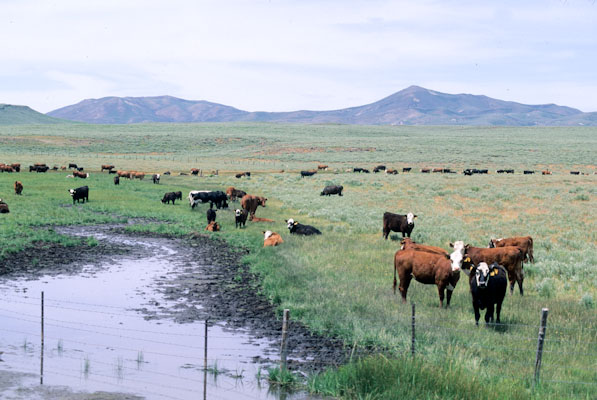District 15 for the Texas State Board of Education covers 77 counties in Texas’s northern Panhandle. It’s oil (Midland), cotton, Texas prairie and small towns, and lots of schools, and some surprisingly good colleges and universities.

Texas State Board of Education District 15, TFN image – “District Overview
District 15 is huge, covering all of northwestern Texas. It is also arguably the most Republican SBOE district, giving more than 74 percent of the vote to Sen. John McCain in the 2008 presidential election and more than 70 percent to Gov. Rick Perry in the 2010 gubernatorial race.”
It’s a district where science plays a big role, and should play a bigger one. The 15th includes those lands in Texas where the Dust Bowl got started, where unwise plowing based on inaccurate readings of climate contributed to one of the greatest man-made natural resources disasters in all of history. It’s the home of Texas Tech University, where members of the chemistry faculty created a wine industry based on the chemistry of grape selection and fermentation, and where geologists learn how to find oil.
This area leads Texas in wind power generation, a considerable factor in the state that leads the nation in wind power generation.
In short, science, engineering and other technical disciplines keep this area economically alive, and vital at times.
Of the two candidates, Democrat Steve Schafersman is a scientist, and a long-time, staunch defender of science education (what we now cutely call “STEM” subjects: Science, Technology, Engineering and Math). If the race were decided by a test in STEM subjects, Schafersman would be the winner. Schafersman lives in Midland.
The GOP candidate in the race is religiously anti-science, Marty Rowley of Amarillo. As a good-ol’-boy, former pastor, he’s got a lot of support from the usual suspects. Rowley’s views on science, technology, engineering and mathematics run contrary to the business and farming interests of his entire district. Do his supporters look to the future?
Do you vote in Midland, Lubbock, Amarillo, Dalhart, Abilene, San Angelo, Dallam County, Tom Greene County, Cooke County or Montague County? You need to vote for Steve Shafersman. Do your children a favor, do your schools a favor, and do your region of Texas a favor, and vote for the guy who works to make education good.
Shafersman is the better-qualified candidate, and probably among the top two or three people with experience making the SBOE work well, in the nation. He deserves the seat, and Texas needs him.
More:
- Texas SBOE 2012 Election: Schafersman v. Rowley (sensuouscurmudgeon.wordpress.com)
- Texas Freedom Network Insider, “Texas Ed Board candidate advocates teaching creationism in science classrooms”
- Texas GOP candidates support creationism, posting of Ten Commandments in school rooms, contrary to law, science, and reality
- Shake-up possible for state board (mywesttexas.com)
- Evolution tops State Board of Education debate topics (amarillo.com)
- Providing accurate science, history information top priority for state education candidate (mywesttexas.com)
- Potential new faces on the Texas education board (star-telegram.com)
- Ideas for school vouchers are up in the air (gosanangelo.com)
- Democratic candidates Sadler, Schafersman in Abilene today (reporternews.com)
- Views vary for State Board of Education candidates (mywesttexas.com)
Steve Schafersman campaign flier:




 Posted by Ed Darrell
Posted by Ed Darrell 












